As technology continues to progress and evolve, so does the equipment that scientists use in their monitoring programs. Autonomous Underwater Vehicles (AUVs) – devices that perform predefined missions without constant human intervention and supervision – are one such example of equipment that has become particularly popular within the scientific community and beyond. The appeal of these devices is that they are able to operate for extended periods of time, survey large areas more efficiently than other equipment or vessels, and can access remote or hazardous areas.
With the demand of AUVs on the rise, it has become necessary for sensors to be designed specifically with the AUV’s unique requirements in mind. RBR, a Canadian company based in Ottawa, developed the RBRlegato3 C.T.D in partnership with manufacturers to address these constraints and extend the AUV’s measurement capabilities. Power management is critical to AUV operations, so a driving factor in its development was low power consumption and optimisation for flow dynamics.
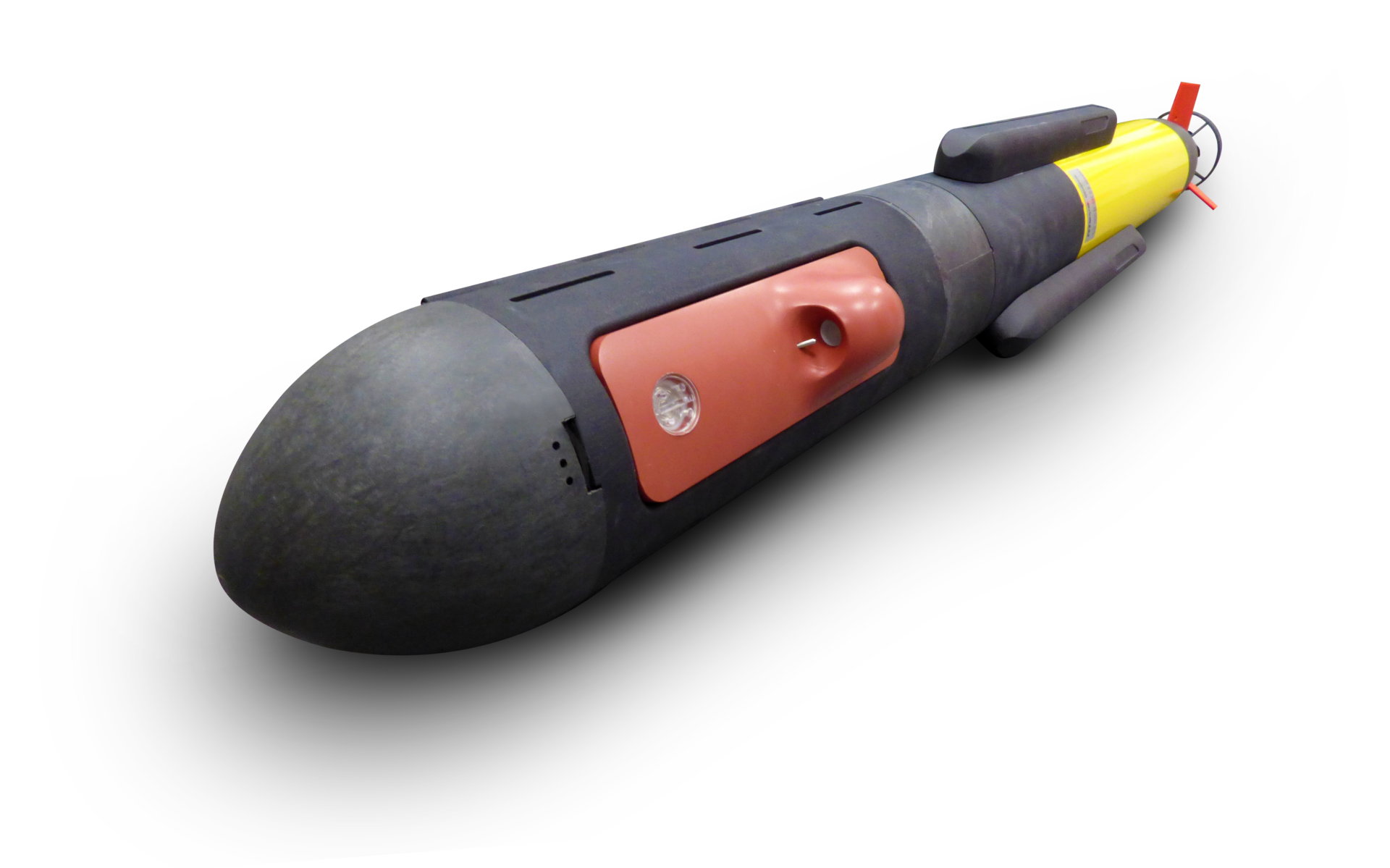
Meet the NemoSens micro-AUV
The RBRlegato3 C.T.D, as well as its variations with additional parameters, has been integrated into a variety of platforms, most recently with the NemoSens AUV, a micro-AUV developed by RTsys, a French company that specializes in underwater acoustics and autonomous vehicles. The NemoSens AUV was specifically developed to make AUVs more accessible to a wider audience.
“Such compact devices [with] navigation capabilities open new perspectives for more applications every day,” comments Cyrille Lohier, the AUV project manager at RTsys.
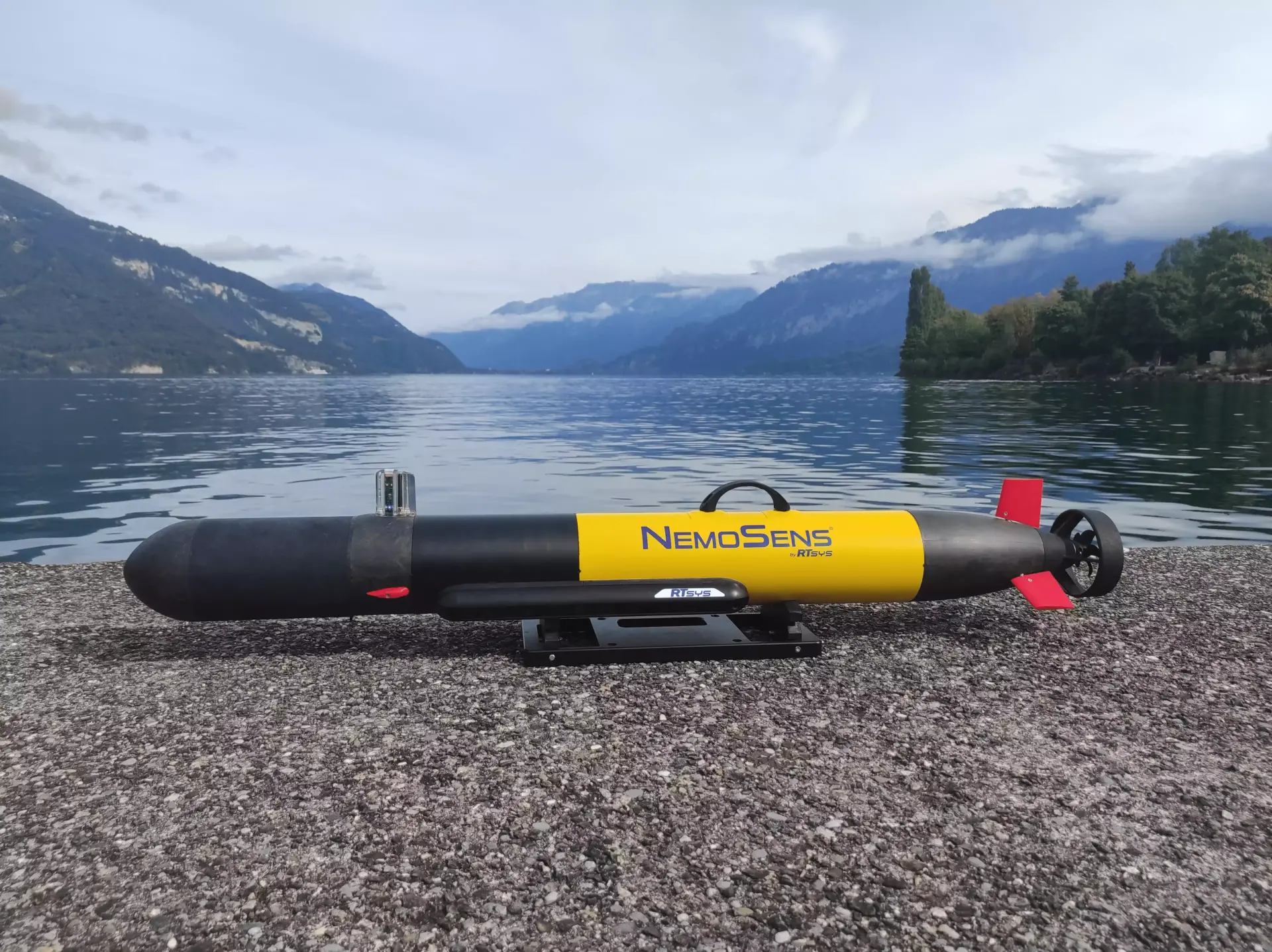
AUVs can be programmed to follow specific paths or patterns, and can navigate through complex underwater terrain. They are designed to operate quietly, with minimal acoustic and hydrodynamic disturbances, and have lower carbon emissions than a traditional crewed vessel. Compact AUVs – in other words, one- or two-person portable – are particularly desirable since they do not require large vessels to launch or recover. NemoSens is a micro-AUV (one-person portable), coming in at less than 1m long and 10kg in weight.
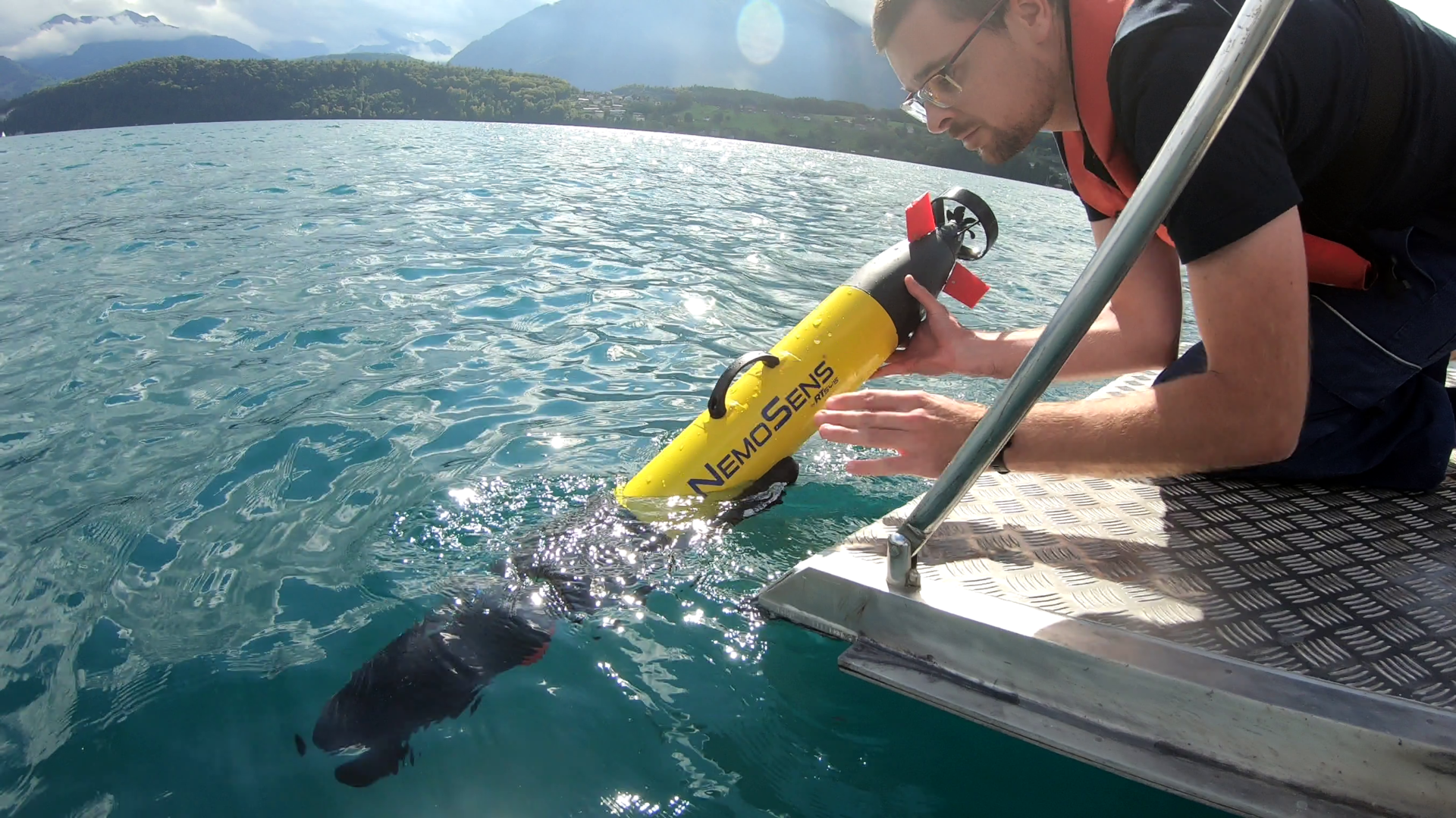
The RBRlegato3 C.T.D – a perfect fit
NemoSens can be equipped with many types of equipment, such as multiparameter probes (e.g. CTDs), side-scan sonar, video cameras, magnetometers, altimeters, and ADCPs. When outfitting the NemoSens with new sensors, the team at RTsys looks for those that are compact (in size and weight), are easily integrated with NemoSens, produce high quality data, and are affordable so that the AUV remains accessible to a wide range of consumers.
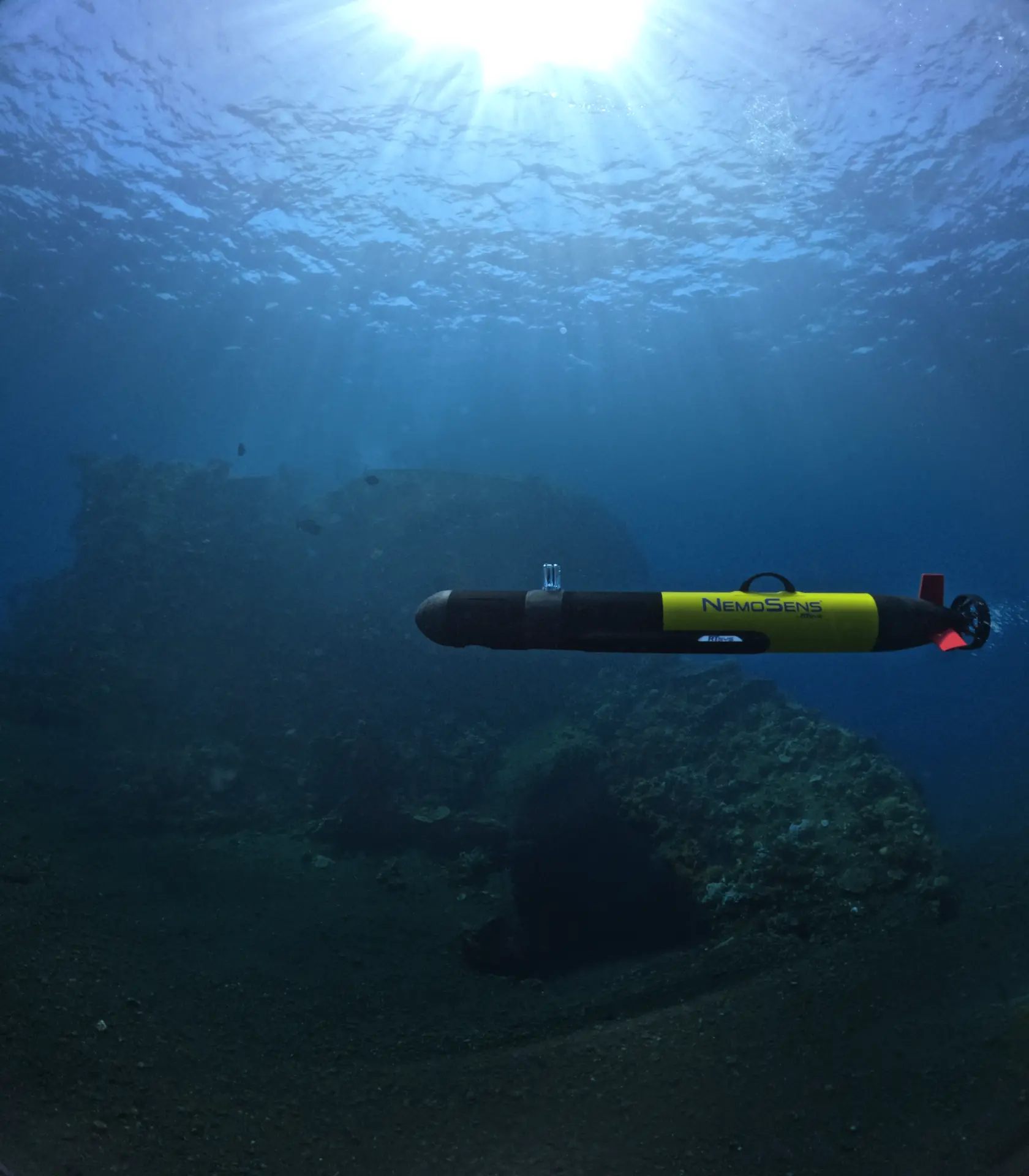
“The mechanical design of the RBRlegato3 C.T.D perfectly fits in the cylindrical shape of NemoSens,” says Lohier. “RTsys has been working with RBR probes for different kinds of projects for years. The quality of the data has always been good, and the integration of the sensors to our data loggers has always been very simple.”
Lohier also notes that it’s important to have good support when integrating new sensors onto their AUVs. “We’ve been in contact with the RBR technical team since the beginning and their support has always been appreciated. It’s useful to work as a team in the integration,” he says.
NemoSens is composed of a “dry section” (i.e. electronics, batteries, and engine) and a “wet section” (i.e. front outer component of AUV that comes in contact with water). The “wet section” offers two connectors for sensor integration. Sensors like the RBRlegato3 C.T.D are attached to the front of the AUV with a mechanical bracket that RTsys designs and optimizes for data acquisition.
A typical mission for a NemoSens micro-AUV starts on shore when it is programmed for that specific trip. Once deployed, which can be either from shore or on a (small or large) vessel, its Live Tracking system allows users to track the AUV’s location in real time. It can travel as fast as eight knots and can go down to 300m depth with a 10-hour maximum for each mission. After the mission is complete, the AUV resurfaces and shares its exact location for safe recovery.
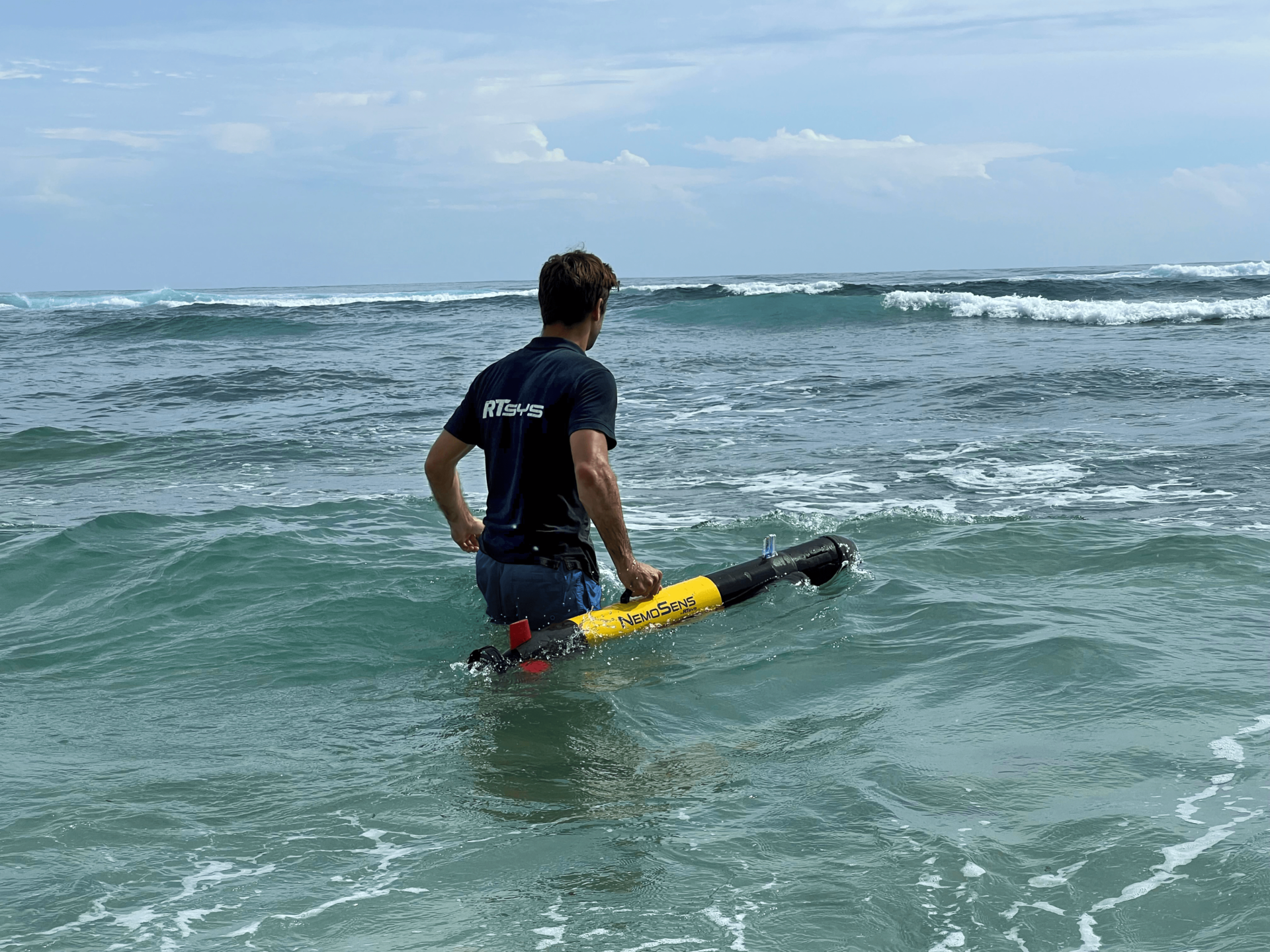
Extending the AUV’s capabilities
The team at RTsys is constantly trying to improve their designs and functionality to be even more adaptable and accessible. “We are always looking for new functions to offer to our users,” comments Lohier. “So this could typically come from even smaller probes and sensors, or [new] multiparameter probes offering the possibility to monitor more parameters!”
They are also working on including a ballast system within the AUV. The objective of this work would be for the AUV to stop, either at the surface or on the seafloor, so that it can collect data for a few minutes or even hours at a fixed position before moving to a new location. Surface hovering will also allow the AUV to transmit data through either Wi-Fi or iridium without the user needing to recover the AUV.
NemoSens has been used in numerous and diverse projects since the first release of units in 2020. For example, scientists have used it with the multiparameter RBRlegato3 C.T.D to create 3D maps; monitor oxygen in coastal environments and estuaries; assess the impact of renewable energy projects; and monitor temperature gradients in polar environments.
“Another interesting example is the use by French Oceanographic Institute IFREMER of one NemoSens that was delivered with an upside down Side Scan Sonar specifically designed to collect data images of polar ice and submerged parts of icebergs,” comments Lohier.
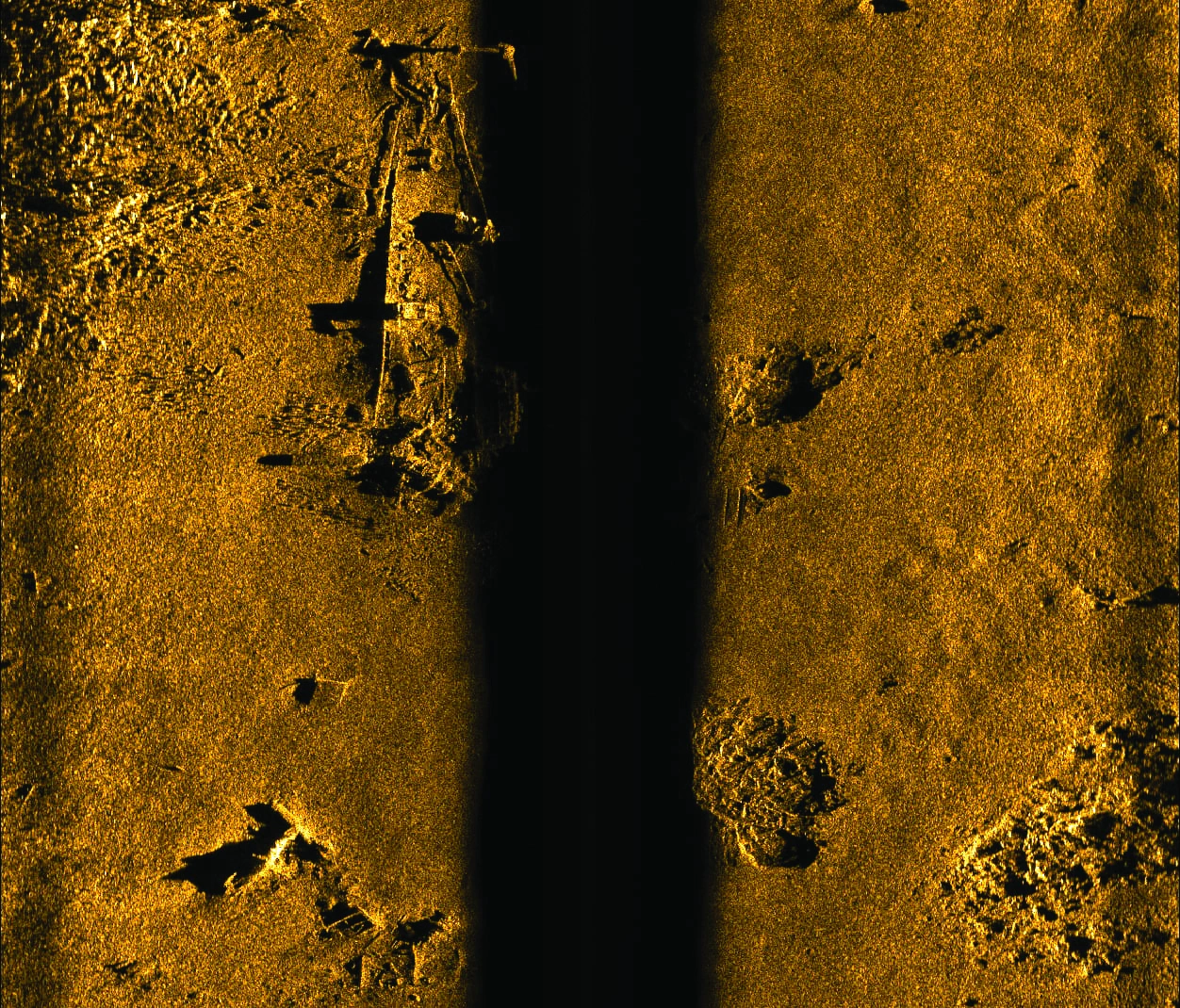
AUVs like the NemoSens allow scientists and others to monitor previously inaccessible locations, while also reducing mobilization costs and environmental impacts. Equipped with compact sensors like the RBRlegato3 C.T.D, these platforms are undeniably becoming indispensable tools helping scientists collect a variety of ocean data.
“Both oceanography and industry markets are definitely looking for more and more automatization of the surveys,” Lohier says, “so we believe it’s just the beginning of the micro-AUV’s history.”
Story by Krysten Rutherford
This story was previously published in the July 2023 Special Edition of ECO Magazine.